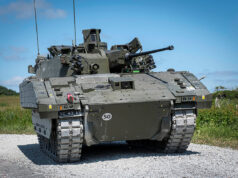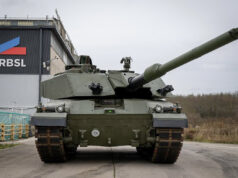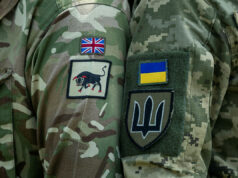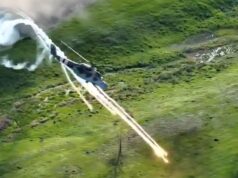During a recent parliamentary session, questions were raised concerning the specifics of the UK’s military aid to Ukraine.
John Martin McDonnell, Labour MP for Hayes and Harlington, inquired about the contents of the UK’s largest-ever military aid package to Ukraine, particularly whether it would include the advanced Dragon Fire laser system.
McDonnell’s question, directed to the Ministry of Defence, referenced the press notice titled “PM to announce largest-ever military aid package to Ukraine on visit to Poland,” published on 23 April 2024.
Responding to the query, Leo Docherty MP, Minister of State for the Armed Forces, clarified the components of the aid package. He stated, “The military aid package announced on 23 April 2024 includes more than 400 armoured, protected, and all-terrain vehicles, more than 1,600 munitions in the form of both strike and air defence missiles, as well as additional Storm Shadow long-range precision-guided missiles.”
Addressing the specific question regarding the inclusion of the Dragon Fire laser system, Docherty confirmed that this technology would not be part of the aid package. He explained, “The DragonFire system is under development for first deployment in 2027 and as such is not included in this package.”
DragonFire laser weapon project accelerated to equip British warships
The UK DragonFire laser programme – led by MBDA, with partners Leonardo UK and QinetiQ – is accelerating following a decision from the Ministry of Defence to install the weapon system on Royal Navy ships.
The decision, announced by Defence Secretary Grant Shapps, will see the DragonFire laser weapon system rapidly develop from a demonstration programme to an operational capability for the Royal Navy.
The next stages of this development will include further live firings and the manufacture and installation of weapon systems onto Royal Navy platforms.














Why would we risk one of our newest weapons which doesn’t have a massive intercept distance being places close to the Russian’s to steal??
Was never really a likely option, just to early in its development whereby reliability and ruggedising haven’t truly been addressed as yet let alone further fine tuning and upgrading. If it were t be sent I’m sure it would be uk personnel involved and its location in the west or south west near Odessa but in reality its effect would be limited as only one of a few even exist and its a short range weapon, the only real benefit would be testing it in real time conditions, but the testing programme would, due to logistics, probably suffer more than benefit.
Concur, although could envision export of a mature, proven system, eventually. Probably two or three additional design iterations later.
Yes, bonkers. And why even suggest deploying it out 🔊? Hate to say this, but being light, isn’t it going to give away its location unless it’s a quick on off? Does anyone know? And a bit of a silly question, is there such a thing as a colourless or near colourless laser?
The laser would be outside of the visible spectrum.
Most lasers are colourless, it’s only in the movies or under special conditions that they are visible. Laser range finders have been around for yonks and they never go “pew pew!”.
👍
In a military setting, you would probably least like to get zapped by an invisible laser, primarily because of the difficulty in detecting the beam and the potential for unnoticed, cumulative damage. This makes managing and treating injuries more complex.
In contrast, while visible lasers also pose significant risks, at least their presence is easier to detect, potentially allowing for immediate corrective or evasive actions.
More than likely it would be an advanced prototype, Not the full combat model.
Russia targets civilian infrastructure across Ukraine. Surely there would be little risk for one of these laser weapons protecting those sort of targets further west.
Why the continual broadcast about what’s being sent, when, and how much? There’s a bloody war going on, let what is sent do it’s job. And it is, I get that but surely a little less chatter, have some smarts. Talk about it afterwards if you have to! Do you want to spur Russia on or have it defeated?!
I guess the current bunch of plastic Conservatives find “talking the talk” so much easier than “walking the walk”.
If McDonnell was posing that as a serious question then it has some worrying implications for his grasp of basic concepts such as technical readiness.
Well that would make total sense let’s send security sensitive equipment to Ukraine might as well just post one to Russia direct. Even making the suggestion in jest is too far.
I cannot recall a single occasion when British equipment under development was prematurely deployed to a combat zone and operated by foreign military personnel.